BULLET TIPS: UNDERSTANDING BULLETS STARTING FROM THE TIP
Hit your target with maximum efficiency during this fall’s hunting season with these tips. (Yes, we’re talking about the bullets).
Hit your target with maximum efficiency during this fall’s hunting season with these tips. (Yes, we’re talking about the bullets).
_________
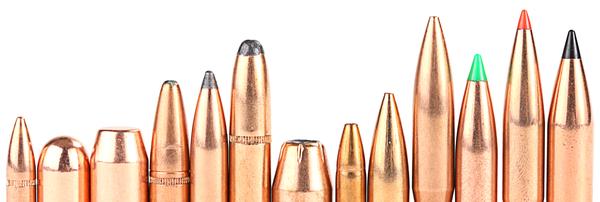
For many shooters, our choice ammo is often “what can we get the most bang for our buck?” This often means we are going for the lowest cost per round, and this will likely lead most of us to full metal jacket ammunition. What about those who are real sticklers for quality and are able to stomach the markup for a superior round for hunting season? Some may ask, what really is the difference between soft point V.S. ballistic tip? What about a hollow point? They are designed (for the most part) to accomplish the same thing… to hit the target and expand, right? In this article we will hopefully clarify some differences in bullet types so that you can choose your ammo wisely and hit your target with maximum efficiency this fall’s hunting season.
FMJ
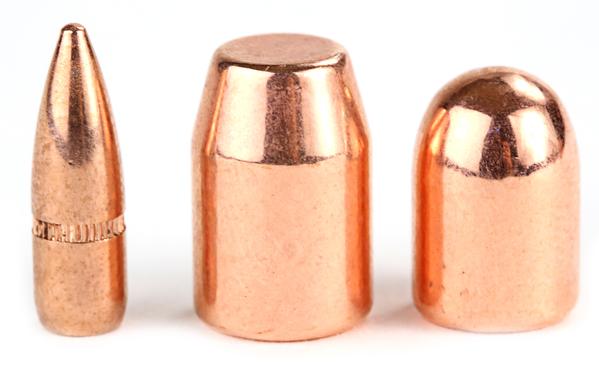
The round is infamous for its ability to keep its shape in the most extreme handling conditions.
The most common round out there for many shooting enthusiasts is probably the FMJ (Full Metal Jacket). Deeply engrained into our modern pop culture by the popular movie title, by the same name and directed by Stanley Kubrick. The round is infamous for its ability to keep its shape in the most extreme conditions thanks to its hard outer jacket of copper that encapsulates the softer and more malleable lead core. Not only tough in the field when exposed to the elements, it also easier to feed in automatic weapons and protects the bore when solid core armor piercing rounds are used. The only fallback for most hunters is that the bullet tends to hold its form when hitting soft targets. The round does not mushroom efficiently like softer point bullets do.
SOFT POINT
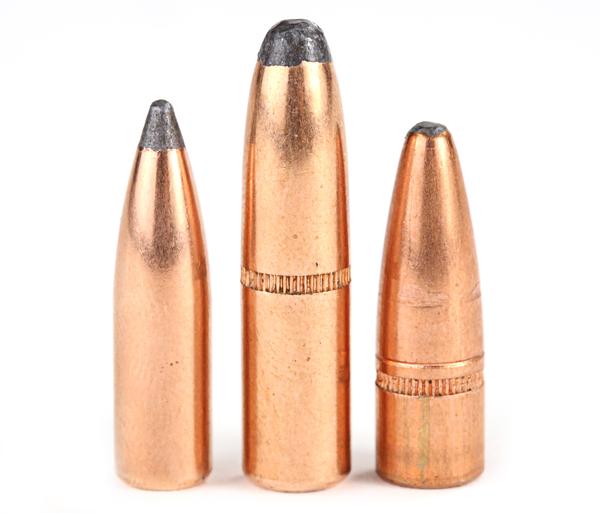
Exposed lead creates more reliable expansion.
Soft nose lead tipped bullets, more commonly known as soft points are projectiles with an exposed lead core that is partially encased in a harder copper jacket. The exposed lead creates more reliable expansion and is ideal for firearms that have feeding issues with hollow point bullets, considering the front of the bullet is easily fed into the chamber due to its soft leading material. Although this type of bullet expands upon hitting soft targets, they do so at a slower rate than hollow point bullets. Depending on the hunting condition, distance, and size of the game you are targeting, the shooter should consider these factors when choosing an effective round. For instance, a blunt nose 30-30 round would work great for short distance deer hunting, but if you’re looking at reaching out past the 100 yard mark for a trophy elk with your 30-06, a standard soft point with a steep angled lead tip would be right in your ballpark.
HOLLOW POINT
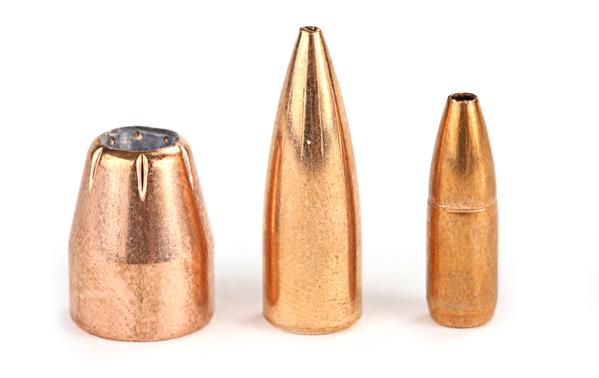
Effective for quick and humane harvest for a wide variety of game.
The hollow point bullet is popular with varmint and predator hunters that are looking for exceptional stopping power and rapid expansion. One of the drawbacks is the rounds fragile nature. As the hollow point is easily damaged during transport, handling, or feeding into the firearm. Also popular for use in Law Enforcement and self-defense, these rounds are less likely to penetrate all the way through an intended soft target or put an innocent bystander in harms way. Effective for quick and humane harvest for a wide variety of game, its a no brainer why the hollow point has become one of the most popular rounds for hunting enthusiasts and personal protection.
More About Hollow Point: *Because of the rounds ability to create more damage upon impact, its use has been banned for military use by the continuance of the St. Petersburg Declaration of 1868, prefaced to the Hague Convention of 1899, Declaration III, which “prohibited the use in international warfare of bullets that easily expand or flatten in the body” This agreement was further solidified through the fourth Geneva Convention of 1949.
Because of the rounds ability to create more damage upon impact, its use has been banned for military use.
BALLISTIC TIP
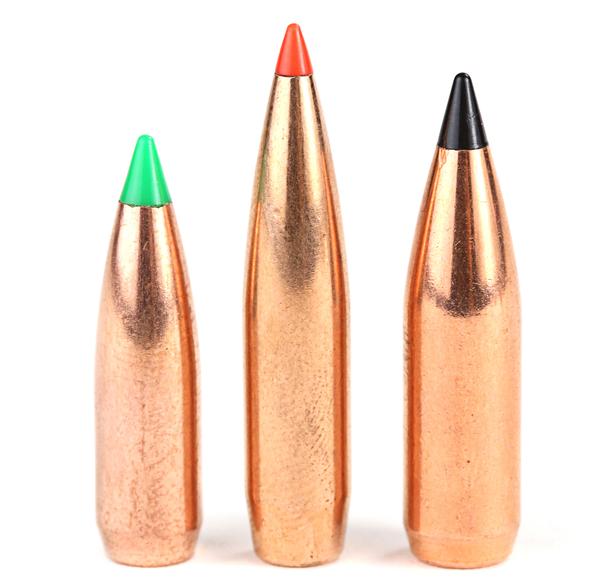
Uniform expansion with maximum takedown power.
Becoming more and more popular in the hunting and competitive shooting world is the ballistic tipped style of bullets. The main purpose of these typically polymer tipped hollow point rounds, is to increase the coefficient of the bullets ballistics. (One of the first tipped bullets was the Remington Bronze Point, first introduced over 80 years ago.) Because of the bullets ability to stay uniform for longer periods of time down the bore and along its more aerodynamic trajectory, the design enables a stable flight path leading to improved accuracy. Popular within the competitive shooting world, it use is marketed towards those looking for match grade capabilities and high reliability to feed. Also popular within hunting applications, upon impact with a soft target the polymer tip is forced into the core of the bullet, thus creating a rapid and uniform expansion with maximum takedown power. This design enables a projectile to have the best of both worlds by combining the efficacies of soft point reliability, hollow point lethality, and unparalleled ballistic performance. That said the round is still susceptible to damage during handling, transport, and feeding into the chamber of the firearm. Overall, polymer tipped bullets are by far the most cosmetically pleasing rounds for consumers as they come in a variety of colors and are heavily produced by nearly every premium bullet manufacturer.
Ultimately, it’s the shooter choice as to which type of round they wish to use that best suits their own needs. Whether you are a purist who shoots blunt soft point rounds in heavy woods for that 140 class buck on your trail cam, or a competitive shooter attempting to be ahead of the curve by using heat shielded polymer tipped projectiles during a match. The type of bullet you choose is just one of the many factors that can lead to tight groups, a healthy harvest, and a great range day.
Source:
https://www.fogammo.com/blogs/news/bullet-tips-understanding-bullets-starting-from-the-tip


